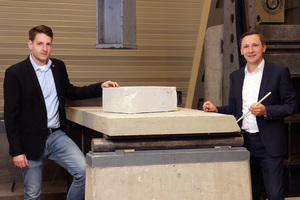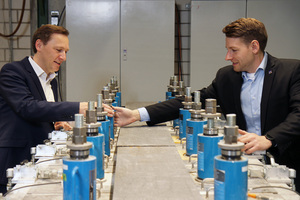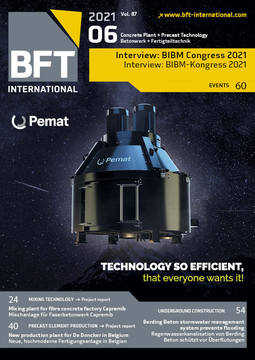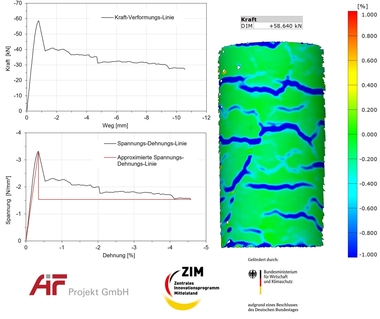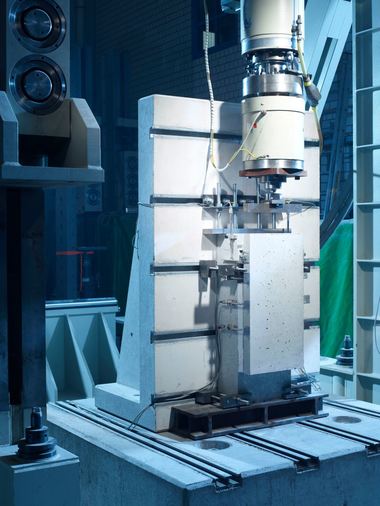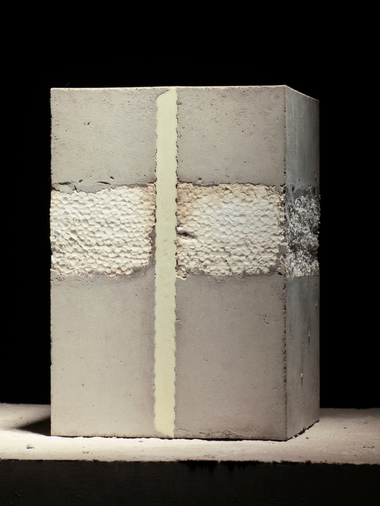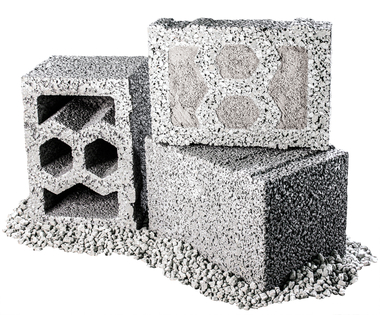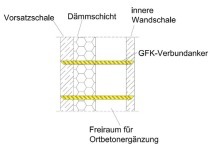More environmentally-friendly lightweight concrete components thanks to mineral foam made of recycled sand
Frequently, polystyrene foam is added to structural elements made of concrete for reducing their weight. It is commonly known under the trade name Styropor (Styrofoam), but the product is not easy to recycle. For this reason, a research consortium under the leadership of TU Kaiserslautern (Technical University of Kaiserslautern) is carrying out research work on replacing it by a mineral foam consisting of recycled sand. The team uses concrete floors being specifically made to investigate the mechanical and construction physical properties of the structure. Thanks to the foam, it will be easier to return such building components to the material cycle in future. The project is supported by the German Federal Ministry of Education and Research (BMBF).
The synthetic material polystyrene is manufactured from mineral oil with a high input of energy. Not least because of its lightweight, the material is often used in various fields, for example, in housing construction. Hence, among others, the material is found in so-called hybrid sandwich floor slabs. These are prefabricated floor elements. „For this purpose, prefabricated slabs made of polystyrene are integrated in the concrete cross-section,“ explains head of the project, Stefan Carstens of the Department of Concrete Structures and Structural Design at the TU Kaiserslautern chaired by Prof. Dr.-Ing. Matthias Pahn. However, recycling these foams is very difficult or even not possible at all. „Which means that such building components cannot entirely be returned to the material cycle.“
New research project
As part of the new research project, the team around professor Pahn investigates how polystyrene can be replaced. In this regard, they focus on mineral foams which consist of normal sand, among other things. „They can be returned to the production cycle,“ the civil engineer mentions as an advantage. But as sand is becoming increasingly scarce, the scientists take a new approach: They opt for recycled sand in their project. „We will use this sand to make mineral foam, integrating it in the floor slabs.“
The foam and the floor elements are developed and constructed by the project partners involved. The mechanical and construction physical properties of the material as well as the structure are investigated in the laboratory of structural engineering at the campus. „We want to know, for example, what about the thermal conductivity,“ Carstens says. This is important in respect of the building‘s heating and cooling systems. „The mineral foam must be comparable to the polystyrene.“ Only then, it would be of interest for future use, according to him.
Apart from TU Kaiserslautern, the Institute of Construction and Building Materials at the Technical University of Darmstadt (Prof. Eddie Koenders and Prof. Albrecht Gilka-Bötzow) takes part in the „MIN-LOOP“ project. In addition, the following industry partners are involved: Innogration GmbH located in Bernkastel-Kues, Betonwerk Büscher in Heek, ee concept GmbH based in Darmstadt and Wilhelm Röser Söhne GmbH & Co. KG located in Neresheim-Dorfmerkingen. The project is funded by the Federal Ministry of Education and Research within the „ReMIN“ funding measure and will run until 2024.

